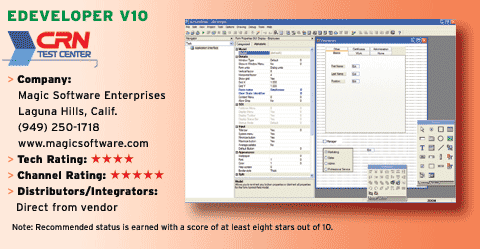Tableau 2.0 Eases Data Analysis Pain
business intelligence database
In addition to using data from spreadsheets, data warehouses and OLAP (online analytical processing) databases, Tableau now can directly connect to relational databases and use multiple tables at once with joins. The previous Tableau version had to rely on database views to analyze data from multiple tables.
To query huge databases, Tableau 2.0 has made the process quite simple and painless. It now includes a configurable data extraction feature that will only download what users specify. The data extraction feature allows users to create filters directly from a pane without having to create queries on a database.
Since Tableau is a desktop tool, it respects the administration rights specified in databases and expects administrators to monitor user activities. To alleviate potential mistakes, Tableau supports query cancellations and also provides a message informing users about the amount of data about to be extracted before downloading begins.
In addition to filters, users also can configure the data extraction feature to extract data by top percentage, number of rows and even by random sampling, if a database supports it. In the case of Oracle, for instance, another box displays percentage based on random sampling or by specific amount. The data extraction feature allows Tableau to support offline access, making data analysis portablethis was not available in the previous version. After analyzing offline data, users can update the data samples from the same database or other databases and reuse the analysis created from previous extractions.
Tableau supports a larger set of dynamic statistical calculations such as moving averages, running totals and year-to-date growth. Tableau also supports quick table calculations and has more date/time functions, trigonometric functions and pass-through calculations, thereby allowing users to build their own calculations.
With these calculations, users are able to analyze data based on deeper patterns. The new calculations are available in the table calculation feature, which can execute any option to get more refined results. For example, by adding percent differences from stock quote listings, users can quickly see the percent difference of the stock prices from the first value of a quarter; Tableau reorganizes the stock chart to show every quarter starting at zero and each return is shown per quarter.
Tableau's new dynamic data inspection enhancements provide more drill-downs, and display key statistics for every selection, including statistics on summaries. Tableau 2.0 also supports quick filters on data inspections. Using a simple filter menu selection, users can see values associated with filter cards, including all values in context and values in a database.
Users also can select individual fields or adjust values with a slider by displaying filtered data and the associated values in the slider bar. In fact, all filters can be exposed as quick filters, allowing users to work at blinding speeds with databases and spreadsheets.
Tableau supports quick visual exclusions, which hide any selected analysis metrics from view. Tableau permits exclusion on groups of data selected and even doing the reverse by keeping selected groups. When users drop data into Tableau's size shelf, the tool creates a customized legend.
With less than 10 percent of the company's product sold via the channel, Tableau Software does not offer much in a channel program. Only the very basic of needs are covered for channel partners. It is clear that the company has focused on direct sales and supporting end customers, not VARs. That said, there is still opportunity for VARs willing to blaze a trail with the company. Without a static channel program in place, prospective partners may be able to negotiate support that best fits their needs.
